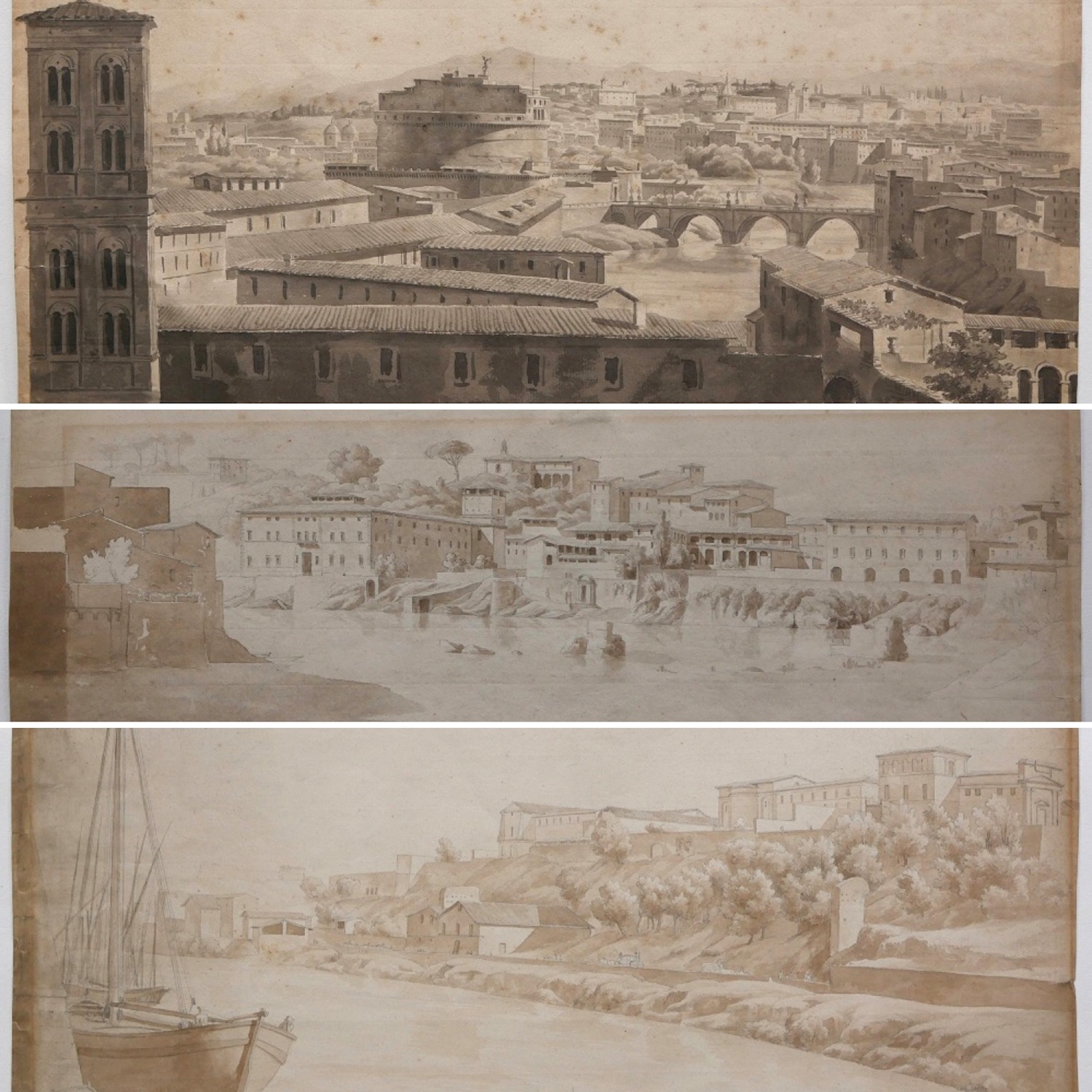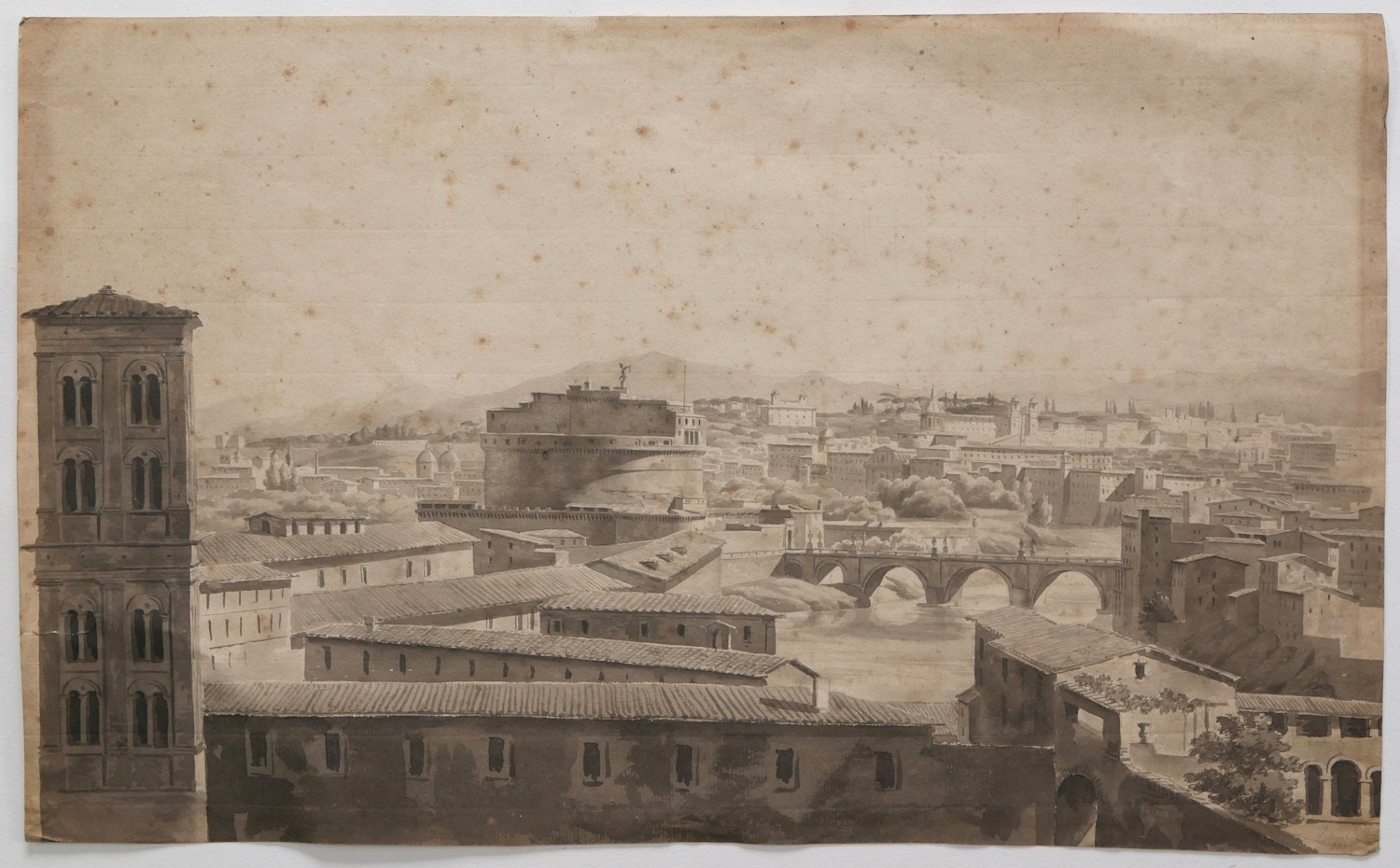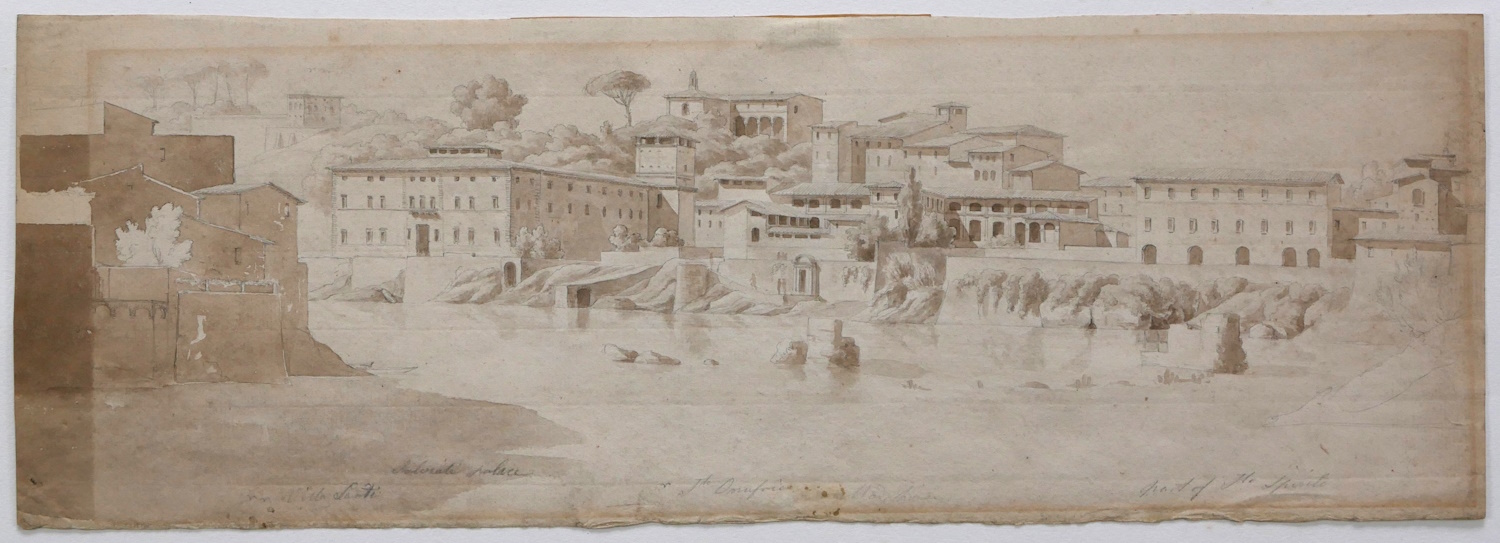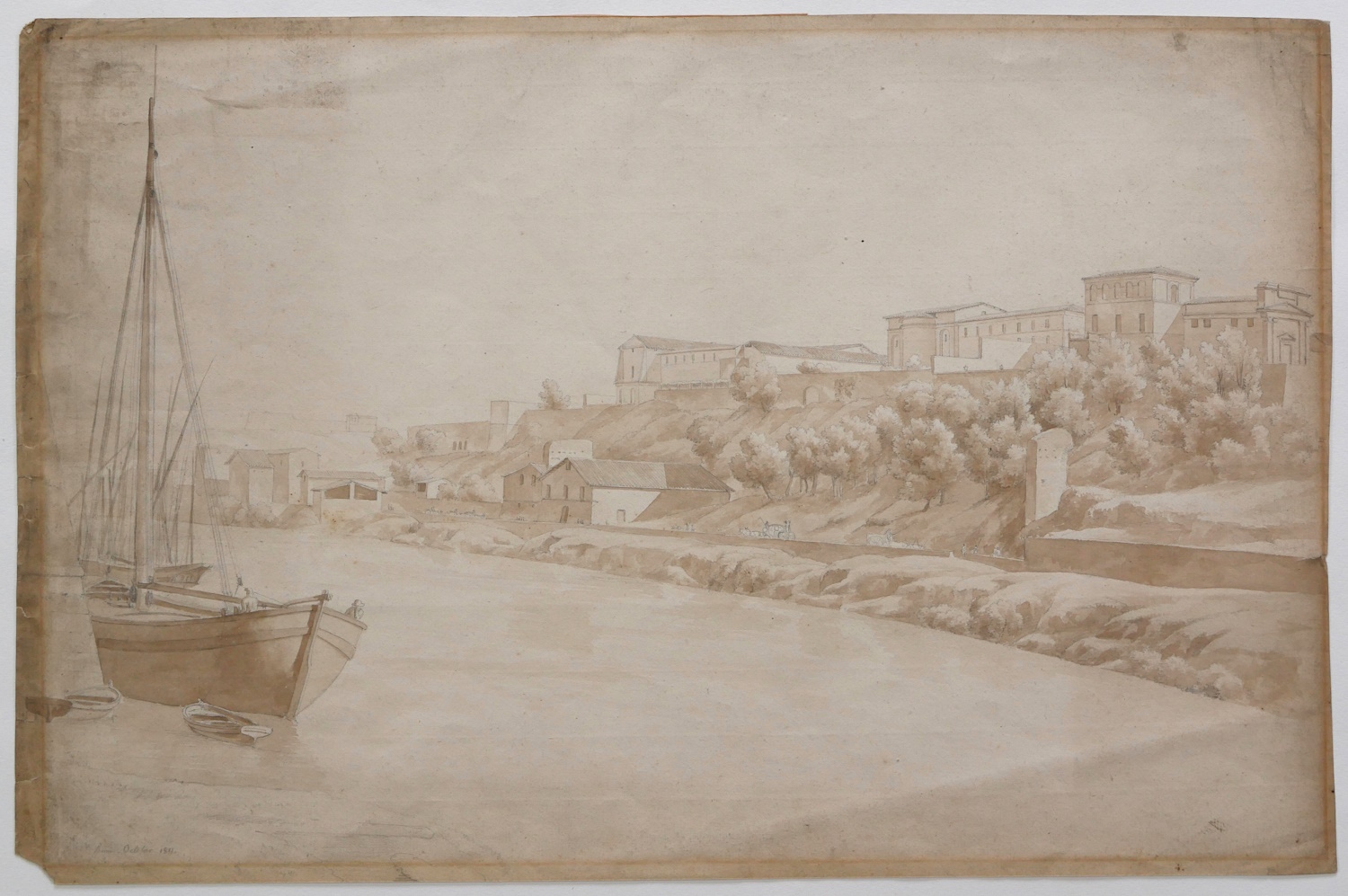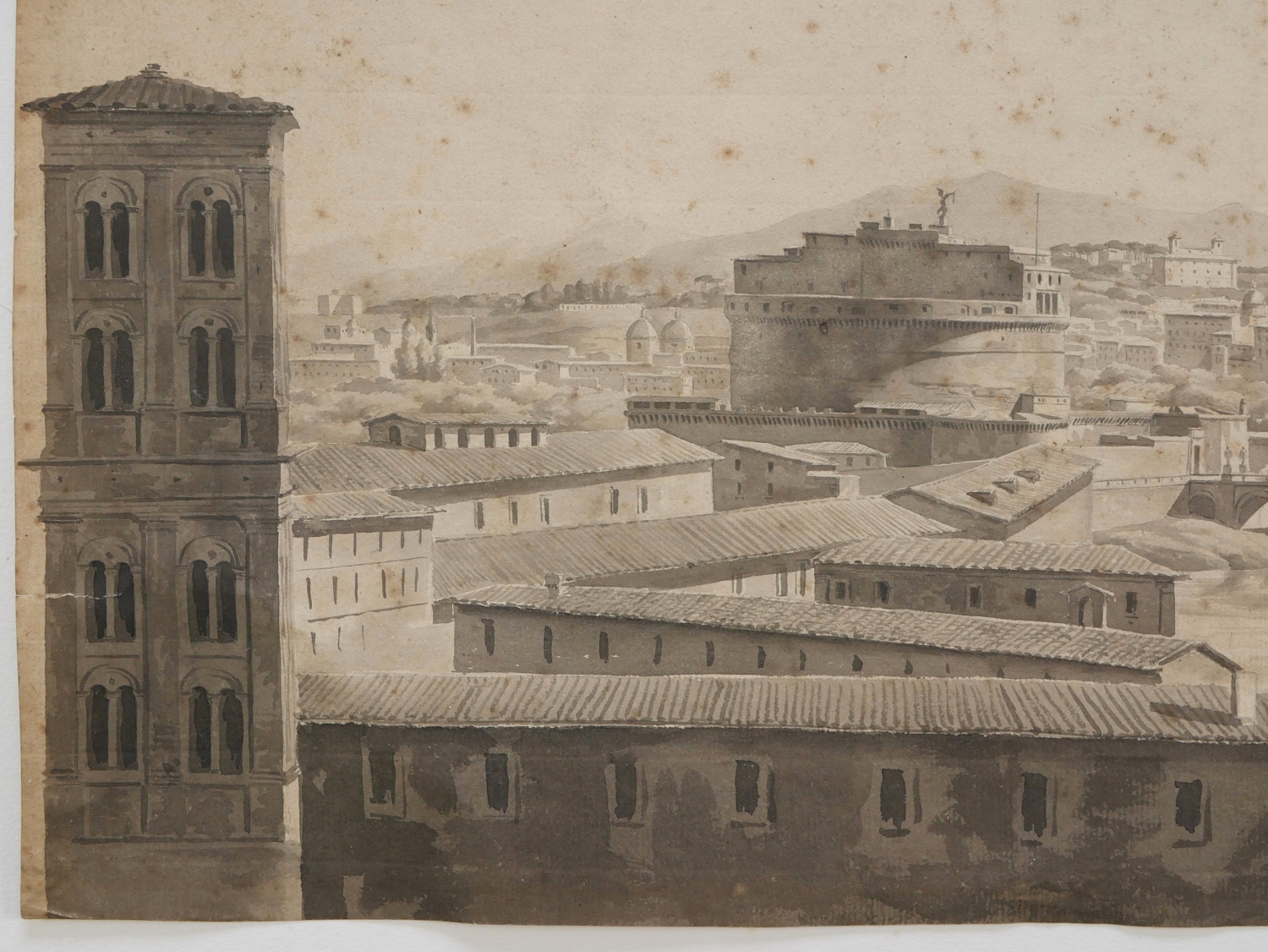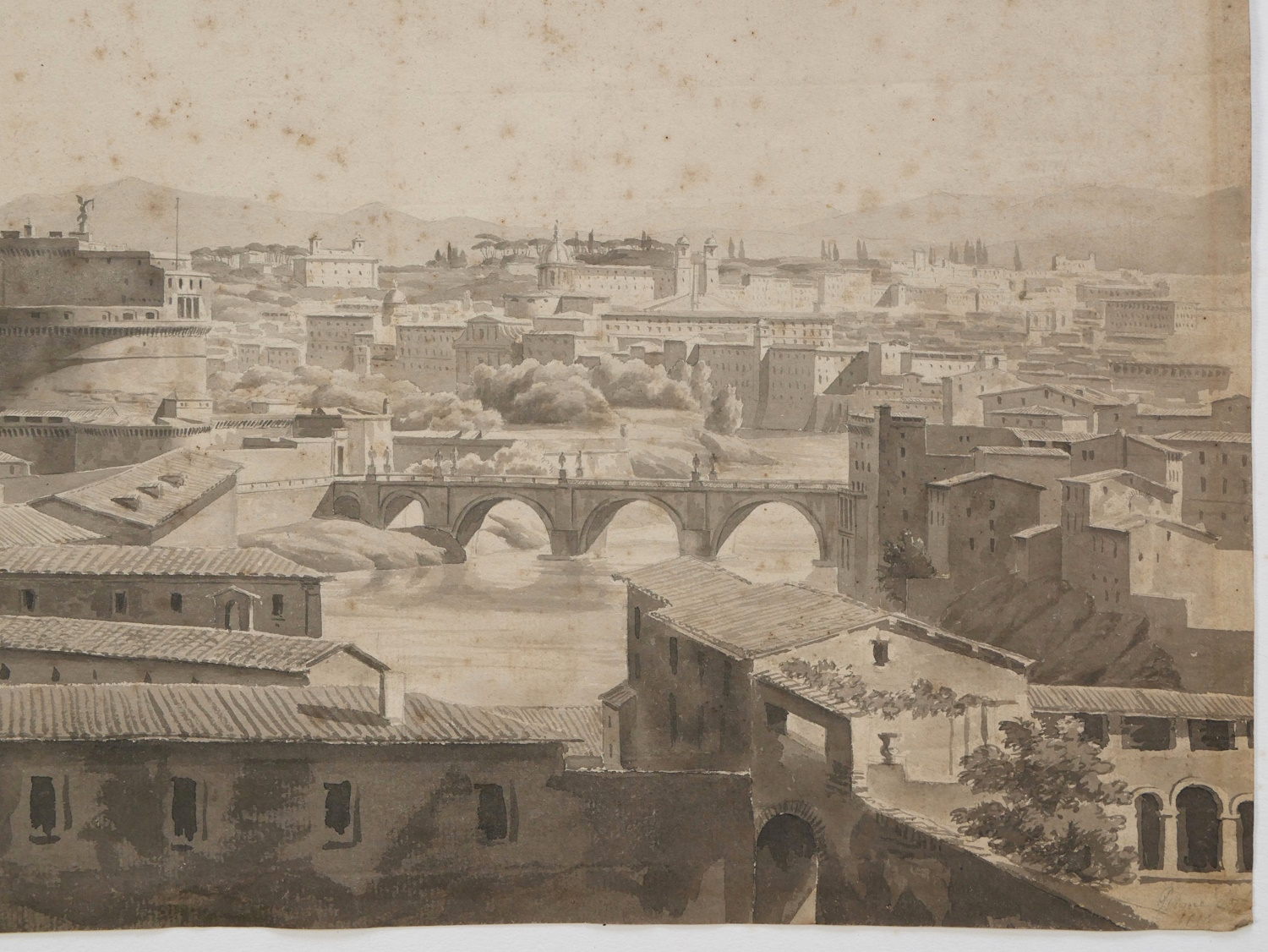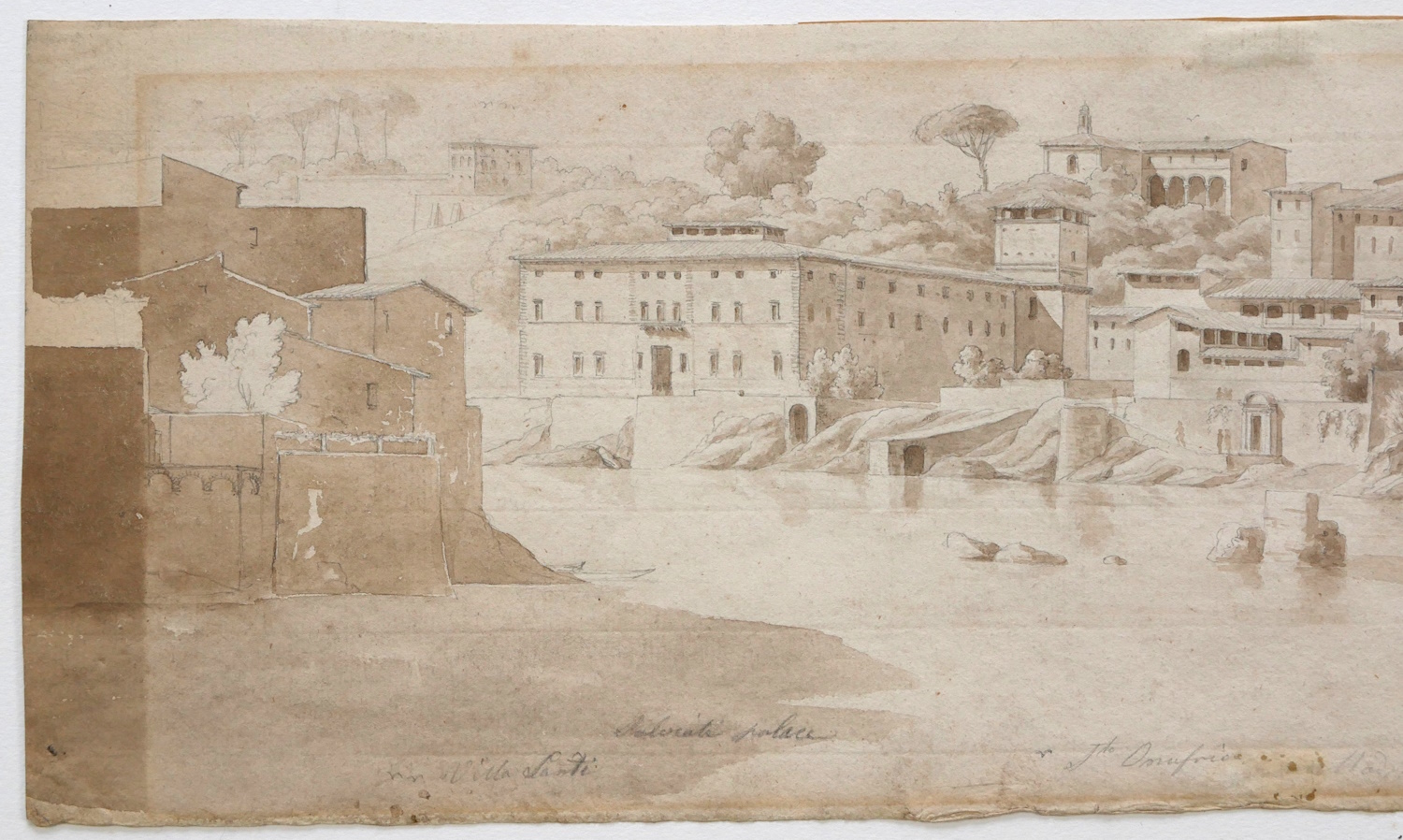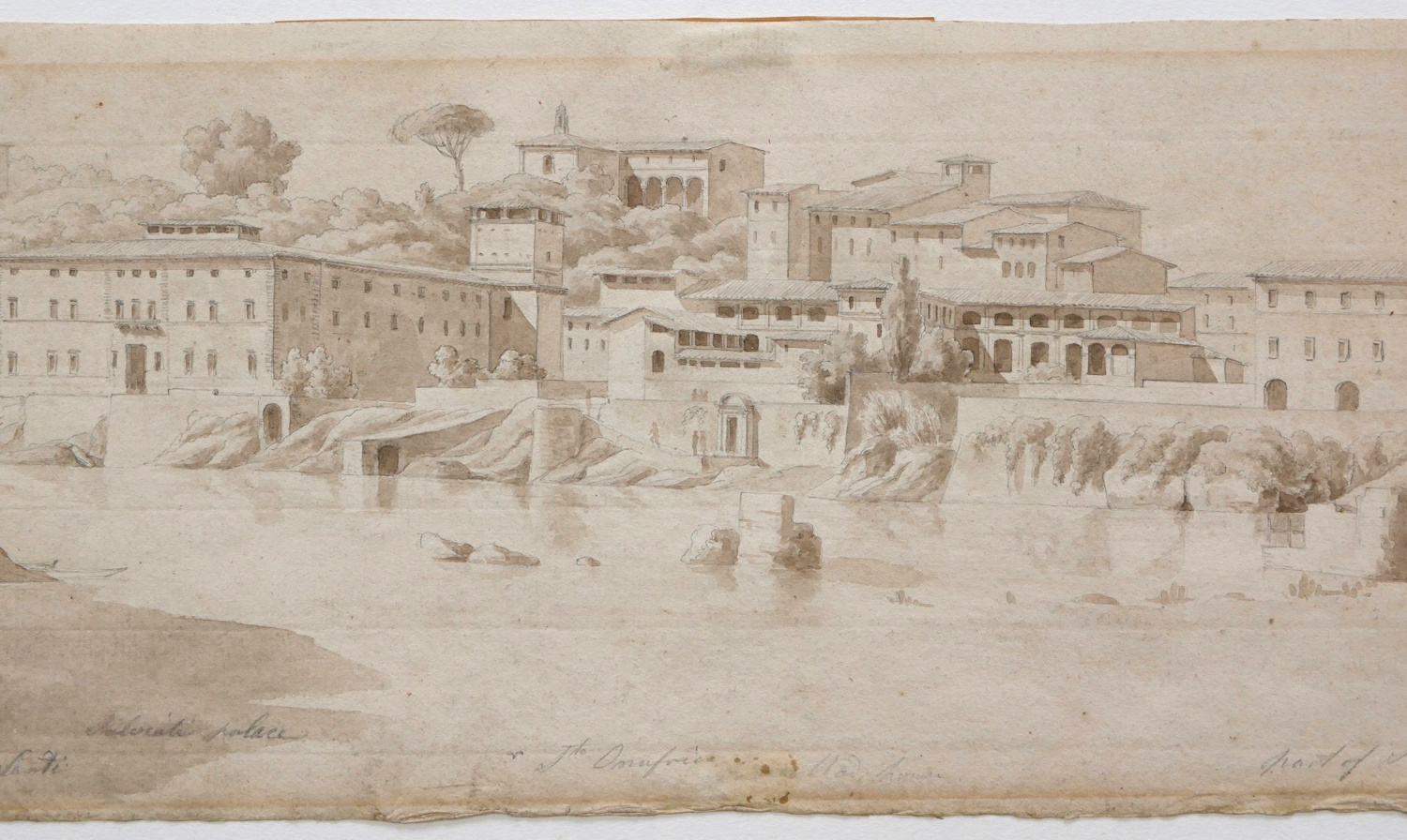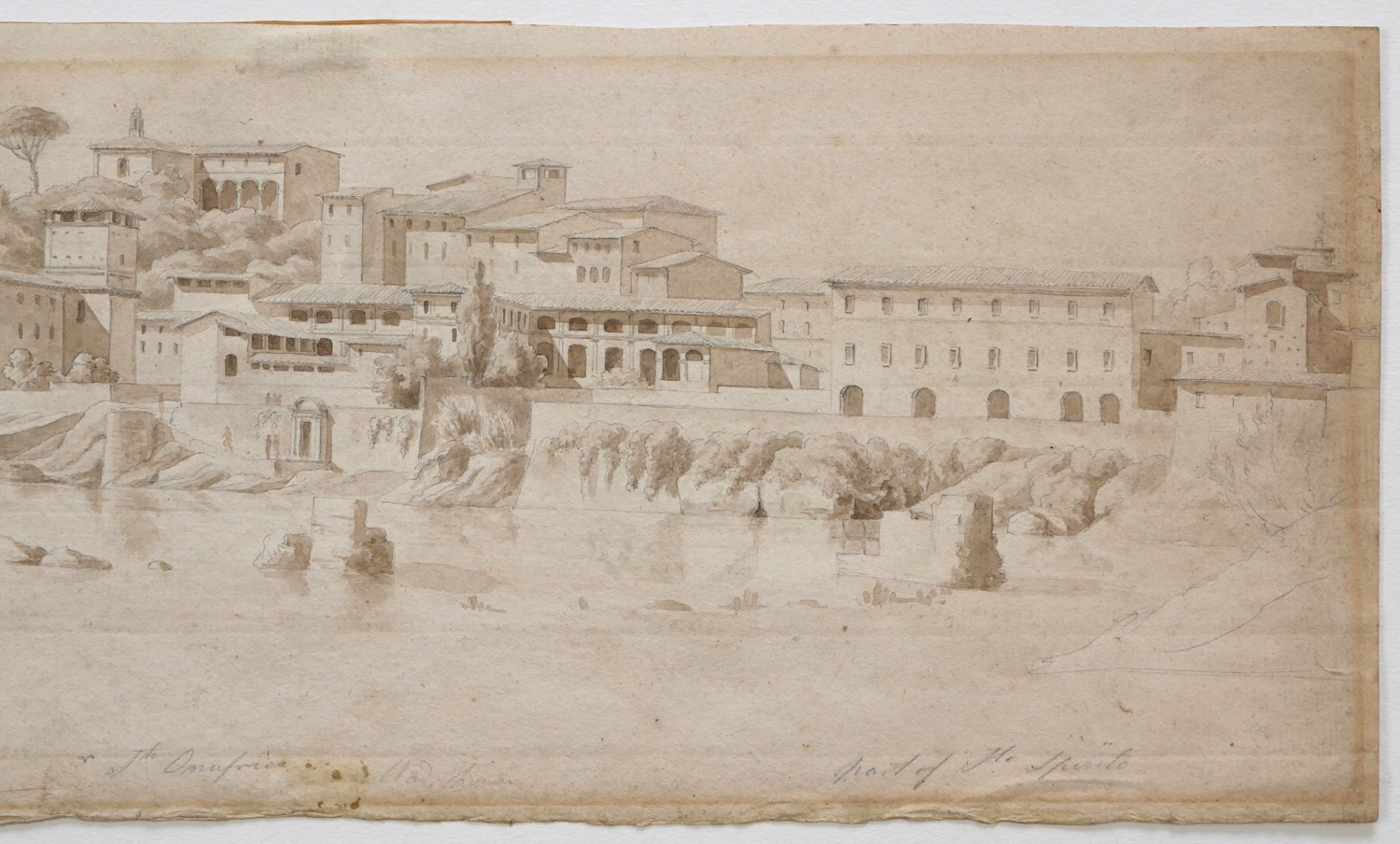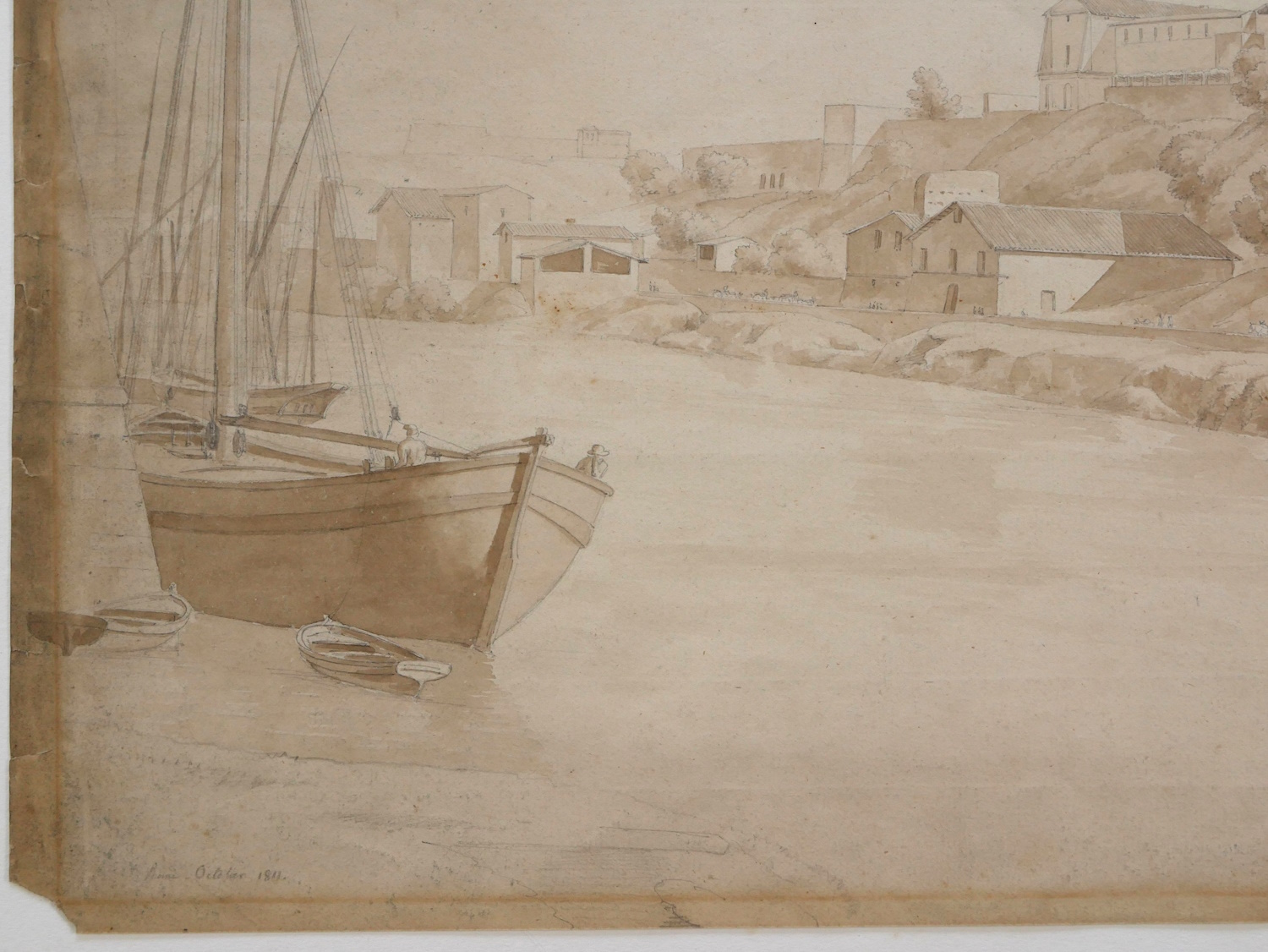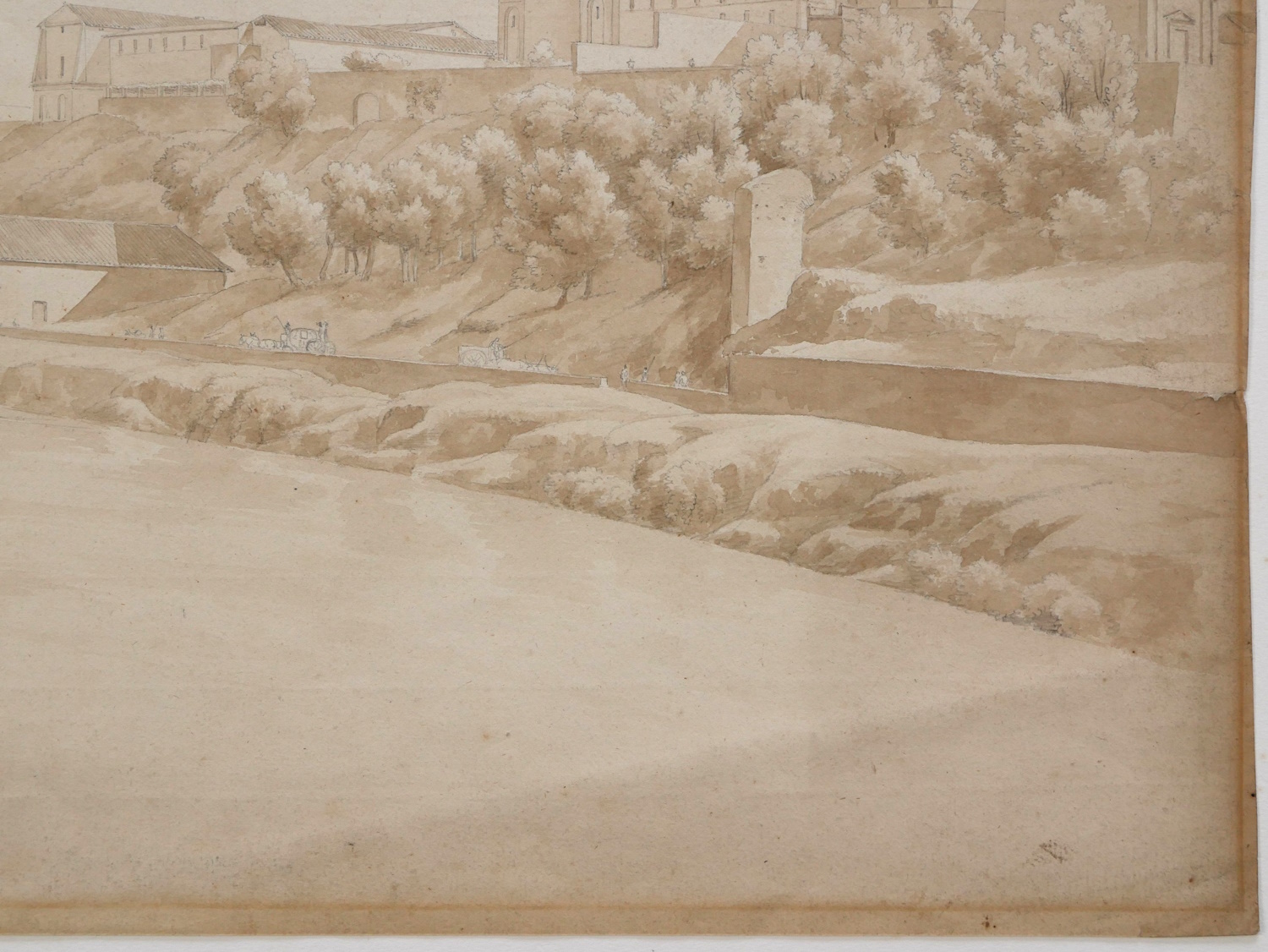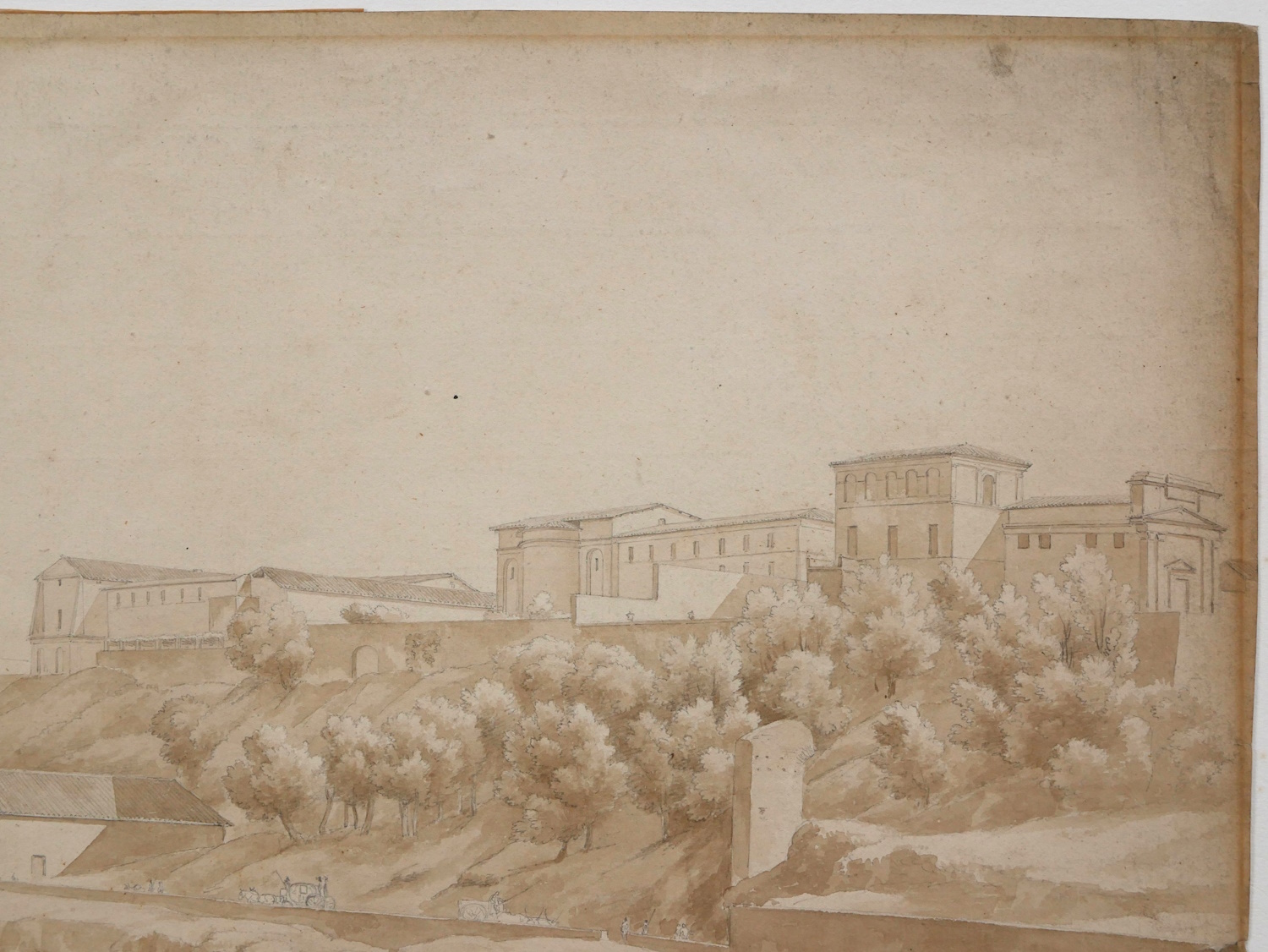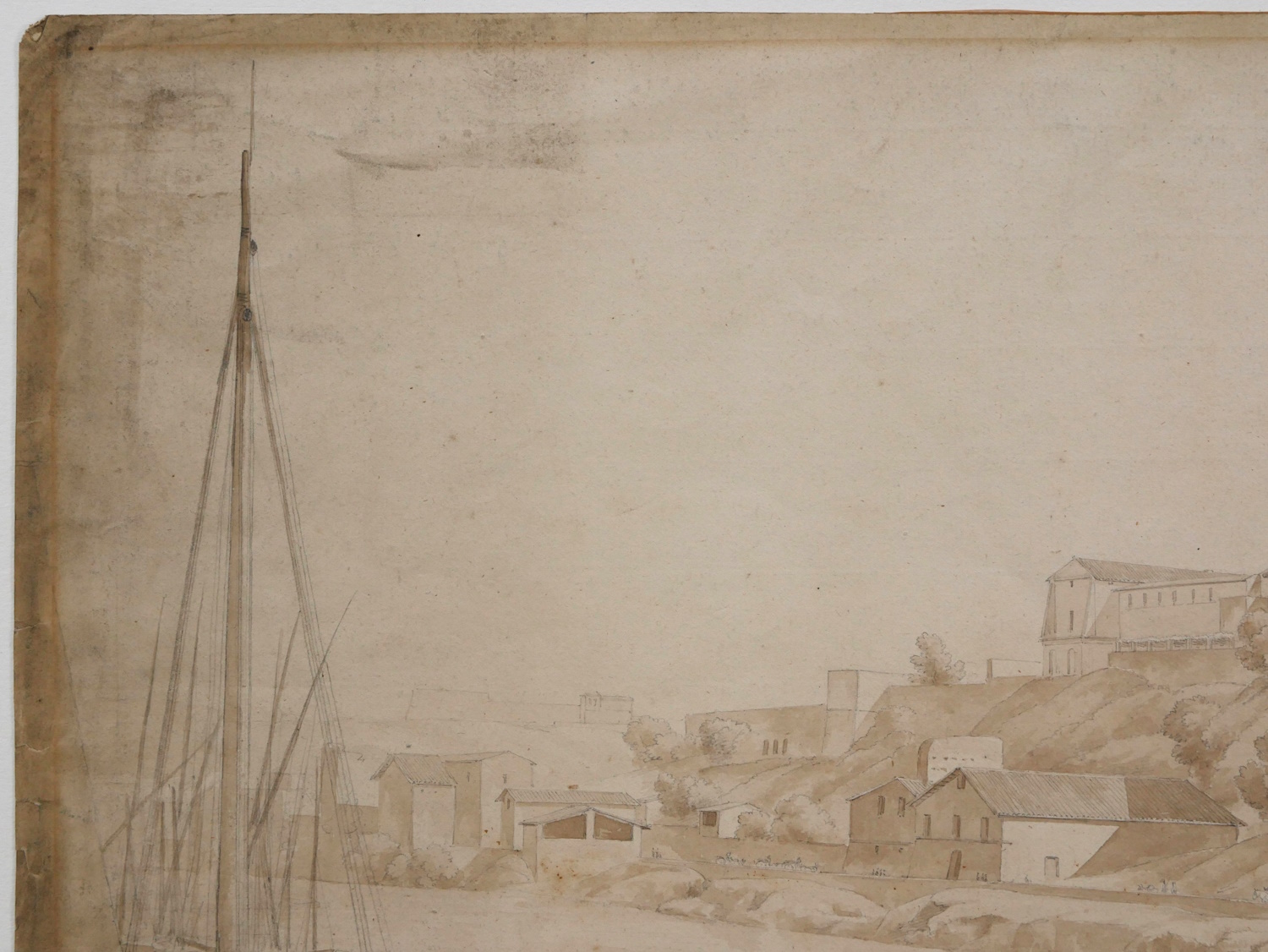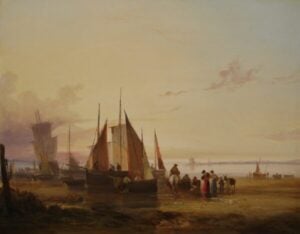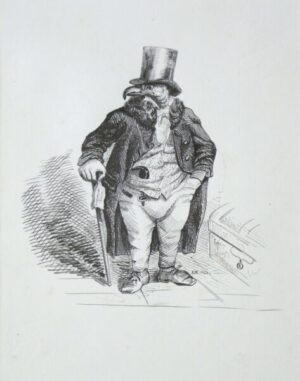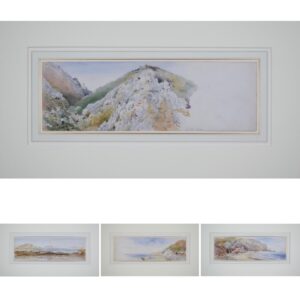Titles: 1. View from the Rooftops of the City – 2. The Hospital of the Holy Spirit in Sassia – 3. View of the Tiber at Port Ripa Grande
A group of three interesting views of Rome having been drawn in pencil on good quality sheets of thick laid paper, then finished in brown or grey wash. All three drawings are unsigned and are thought to be by the same artist. The two large drawings are inscribed in pencil with the dates 1810 and 1811. The buildings in the smaller drawing are identified by inscriptions, written in English at the bottom of the sheet.
The Drawings
1. View from the Rooftops of the City of Rome with the Castel Sant Angelo, slightly left of centre. Inscribed, Rome, (Month ?) 1810, in pencil (lower right). Pencil and grey wash on laid paper. Condition: There is a 3 cm. tear on the lower left side of the sheet, and a small burn hole near the centre of the Castel Sant Angelo, (in the shaded area). Medium to light foxing spots throughout, (mostly in the sky) and a slight burn mark (frame line) left from an old mount. Size of sheet: 13 x 21 1/4 in. (33 x 54 cm).
2. View of the Aspedale Santo Spirito in Sassia from the Tiber, Rome. Inscribed in pencil from left to right, Villa Santi – ***? palace – The Onafrio – Mad House – part of the spirito. Pencil and brown wash on laid paper. Condition: Slight burn mark (frame line) left from an old mount, otherwise VG. Size of sheet: 7 3/8 x 21 1/4 in. (18.8 x 54 cm).
An account by Joseph Guislain during a visit in 1838 described the threefold division of the hospital into large wards (each with its own distinctive building) for abandoned children, the physically ill, and the mentally ill. Respectively 850 patients in all.
3. View of the Tiber at Porto di Ripa Grande outside Porta Portese looking towards Marmorata and the churches on Monte Aventino, Rome. Inscribed, Rome, October 1811, in pencil (lower left). Pencil and brown wash on laid paper. Condition: There are a few small tears on the left side of the sheet, the largest being 1.4 cm. and a couple of short tears on the right side. Slight burn mark (frame line) left from an old mount, otherwise VG. Size of sheet: 15 x 23 in. (38.2 x 58.4 cm).
For a similar drawing see: Christoffer Willhelm Eckersberg, View of the Tiber at Porto di Ripa Grande; SMK Statens Museum for Kunst.
